Are 10th, 11th and 12th Streets, on either side of 5th Avenue, in Greenwich Village? The East Village? The Union Square area? I can’t tell. I was scuttling furtively around those three streets (I scuttle furtively everywhere lest I be detected) in May 2012, so the date on my IPhoto tells me, and while going through photos I haven’t used yet I discovered that I had acquired quite the treasure trove on these three streets. And I think that I can say confidently that if I were to troll any other three consecutive streets in Manhattan, as well as selected sections of the other four boroughs, I’ll make similar discoveries of a historical or infrastructural interest. It just depends on how observant you are, which in turn depends on what kind of mood you’re in.
What I’ll do for this page is simply list my findings by street, from 10th to 12th, in no particular degree of worthiness…
![]()
10th Street
7 East 10th Street, just off 5th Avenue, is officially the New York University Edgar M. Bronfman Center for Jewish Student Life, a regular 5-story brick townhouse — with an intricately, beautifully and painstakingly carved teakwood bay window. The window treatment is the work of Lockwood de Forest (1850-1932), a painter, artist and decorator, a contemporary and occasional collaborator with decorative glass pioneer Lewis Comfort Tiffany. Partnering with Tiffany in the design firm Associated Artists in 1879, an influential design firm that helped spearhead the American Esthetic movement, de Forest directed the production of architectural woodwork.
Visiting India on his honeymoon that year, de Forest collected furniture, jewelry and textiles and became a passionate fan of Far Eastern design, which became highly influential on his own work, attracting the attention of heavy hitters like Andrew Carnegie, whose bedroom and library he designed in what is now the Cooper-Hewitt Museum. He purchased #7 East 10th Street in 1887 and, with architect Van Campen Taylor, proceeded to decorate it with intricately carved teak elements produced in India.
De Forest sold the house and moved to Santa Barbara, CA in 1922, and over time its interior teakwork was removed and sold at auction. But when NYU acquired the building in 1994, much of the woodwork was lovingly restored. It remains a one-of-a-kind address. Except, perhaps, for the building next door.
9 East 10th Street next door is another 5-story brick townhouse, and while at first glance it doesn’t look as magnificently decorated as its next door neighbor, a closer look reveals some surprises. It, too, has ornamental teakwork: in an ornamental square identifying the building as The Ava, around the dors and windows, and in the cornice just below the roof. It was constructed in 1888 by architect William H. Russell and his firm, Renwick, Aspinwall & Russell. Undoubtedly, explains the NY Times‘ Christopher Gray, he used some teak from de Forest’s factory.
9 East 10th was one of novelist, diarist, and playwright Dawn Powell‘s several Greenwich Village addresses.
In her diaries, she expressed her joy of landing in bohemian Greenwich Village, “where all night long typewriters click, people sing in the streets, hurdy gurdies go all day and the laundry boy reads Turgenev.” The New Yorker
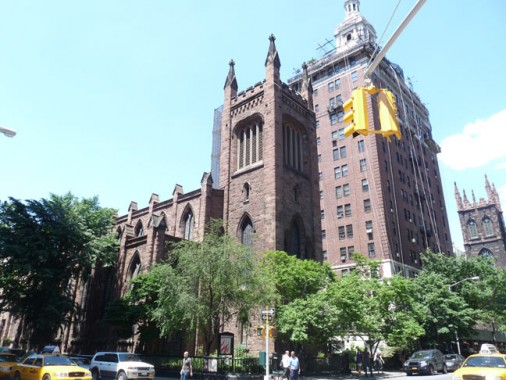
The first of two great churches along 5th Avenue in his area is the Episcopalian Church of the Ascension at 5th Avenue and West 10th Street, one of the first designs (1840-41) by renowned ecclesiastical architect Richard Upjohn. Ascension Church was founded in 1827 and spent its early years in a small church on Canal Street that burned down in 1839.
The Church’s early years on 5th Avenue were punctuated by the rare occurrence of a wedding of a sitting president: John Tyler and Julia Gardener were wed here in 1844. In 1888, a day nursery was founded at the Church, and in 1893 pew rentals were abolished, making church attendance free of charge. The Church was opened to all worshipers 24 hours a day between 1929 and 1966, when increasing crime forced the parish to close nights. During the Depression homeless men slept in the pews.
The adjoining parish house along 10th Street, also an Upjohn design, was altered in 1887 by McKim, Mead & White, and Stanford White redesigned the church interior from 1885-1889. The building is a NYC and National Historic Landmark. Interior artwork from Louis St. Gaudens and John Lafarge can be seen in the interior.
Grace Church, at Broadway and East 10th, is visible when you are looking north on Broadway because of a bend in the road caused by the intransigence of one man: Henry Brevoort, who owned an orchard and refused to budge when the streets were being routed through according to the Randel Plan in the early 19th Century. Broadway was diverted northwest, joining the old Bloomingdale and Kingsbridge Roads uptown, and 11th Street never went through from Broadway to the Bowery Road (today’s 4th Avenue).
This gave the trustees of Grace Episcopalian Church, which had been instituted in 1808, a chance to move uptown from the Wall Street area in 1846 on land purchased from Brevoort and build a massive Gothic Revival church building at Broadway and 10th, with James Renwick Jr. the architect at only 23 years of age. Renwick would go on to build St. Patrick’s Cathedral, but many say this is his greatest achievement. Like the Cathedral of St. John the Divine on 110th Street and Amsterdam, Grace Church is never really finished and has been constantly added to over the year.
The garden on church grounds at Broadway and 10th was once the site of Fleischmann’s Vienna Model Bakery, the Applebee’s of the mid-19th Century. Here’s a menu.
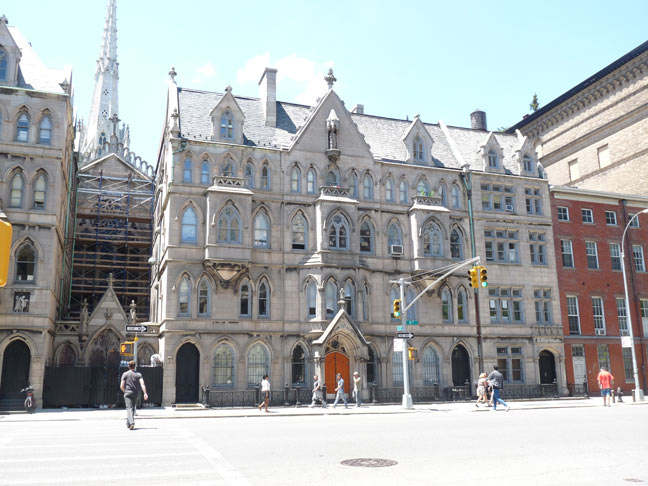
The church houses on 4th Avenue, behind the church: Renwick’s Memorial House takes up the three bays in the center, with Clergy House by Heins & LaFarge to its left (edging out of the shot), and the Neighborhood House to its right.
![]()
11th Street
The five boroughs are chock full of odd little cemeteries, left over from long-gone family homesteads, or from churches or congregations that have since moved away. The greatest concentration of these is in Queens and Staten Island, but Manhattan has a few as well — the New York and New York City Marble Cemeteries off East 2nd Street in the East Village, for example, and the three Shearith Israel Cemeteries in St. James Place in Chinatown, here on West 11th off 6th Avenue, and 10 blocks north on West 21st off 6th.
Shearith Israel was the only Jewish congregation in New York City from 1654 until 1825. During this entire span of history, all of the Jews of New York belonged to the congregation. Shearith Israel was founded by 23 Jews, mostly of Spanish and Portuguese origin. The earliest Jewish cemetery in the U.S. was recorded in 1656 in New Amsterdam where authorities granted the Shearith Israel Congregation “a little hook of land situated outside of this city for a burial place.”
… This cemetery is much smaller than it originally was. Burials began here in 1805, in what was a much larger, square plot extending into what is now the street. The Commissioners’ Plan had established the city’s grid in 1811, but not until 1830 was West 11th Street cut through, at that time reducing the cemetery to its present tiny triangle. The disturbed plots were moved further uptown to the Third Cemetery [below] on West 21st Street. In 1852 city law forbade burial within Manhattan, and subsequent interments have been made in Queens. Sephardic Studies
In 2013, if a cemetery stood in the way of a new street grid the street would, most likely, be interrupted, or be made to angle around the cemetery somehow. In 1830, this part of Manhattan was mostly farms and fields punctuated by the Minetta Brook (see below), and the city was not to be deterred by an apparently insignificant Jewish cemetery. Today, the cemetery is a leftover curio from a former age, overlooked by most passersby; I remembered it from Village jaunts in the 1980s, and it became one of the touchstones when I first began to photograph and compose FNY in 1998.
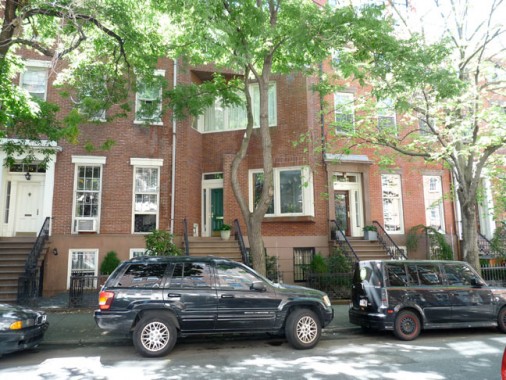
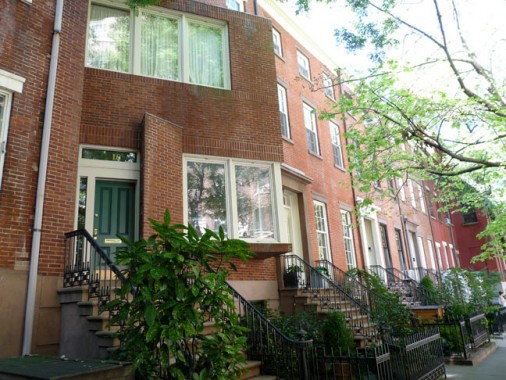
18 West 11th Street, near 5th Avenue, has an unusual V-shaped front, jutting out toward the street quite unlike its row of fellow brick townhouses. It is about 135 years younger than the overall row, in fact, because it replaced a building that was accidentally blown up by a lair of domestic terrorists.
Henry Brevoort, of the apple orchard that helped redirect Broadway, built the row of handsome brick dwellings along West 11th Street in 1844, about 14 years after the street itself came into existence. The buildings blithely carried on for the next 126 years — actor Dustin Hoffman, then near the peak of his early fame after The Graduate and Midnight Cowboy — had recently become a tenant at 16 West 11th.
Five members of the Weathermen, a domestic terrorist group in the 1960s, had set up a bomb factory in the basement of No. 18, purportedly meaning to destroy Low Library at Columbia University. But on March 6, 1970, some of their dynamite cache accidentally exploded. Three Weathermen were killed; two, Cathlyn Wilkerson and Katherine Boudin, escaped and avoided capture for more than a decade.
In 1978 architect Hugh Hardy completed a new building at #18 the largely resembled its mates, except for the jutting front, meant, perhaps, as a reminder of the violent end of its predecessor. For many years the owners kept a Paddington Bear in the window, with ever-changing outfits. The house sold for over $9M in 2012.
For more: Daytonian in Manhattan; Mel Gussow, a 16 West 11th resident, in NY Times
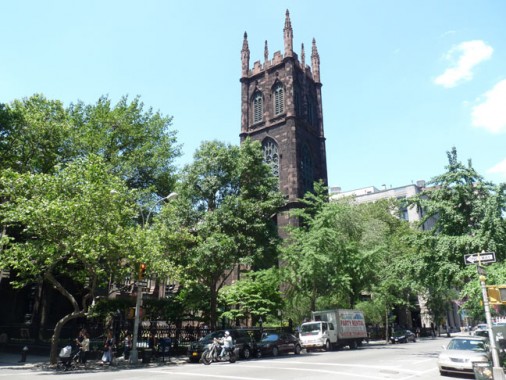

First Presbyterian Church, 5th Avenue and West 11th Street, known as the “Old First,” opened in 1896, the work of architect Joseph C. Wells. The south transept, added in 1894, is by McKim, Mead & White. It is one of the oldest congregations in NYC, founded on Wall Street in 1716. The church has Scottish roots, and was known as the “Church of the Patriots” during the Revolutionary era, because of the assistance its congregation gave to the American cause. King George III had refused to grant the Presbyterian church a charter, wishing to uphold the rights of the Anglican Church of England.
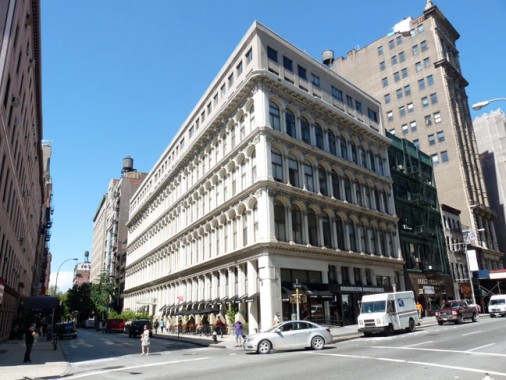
Here’s some “uptown” cast iron on Broadway and 11th, across from Grace Church. (Most of NYC’s cast-iron front buildings are concentrated in Tribeca and SoHo, though you do find some along 14th and 23rd Streets.) This is a former department store, McCreery’s, opened in 1868 by Irish immigrant James McCreery. He arrived in 1845 as a 20-year-old and originally sold Irish goods, but soon expanded into general dry goods. McCreery became a philanthropist and patron of the arts, and his funds helped found the Metropolitan Museum of Art.
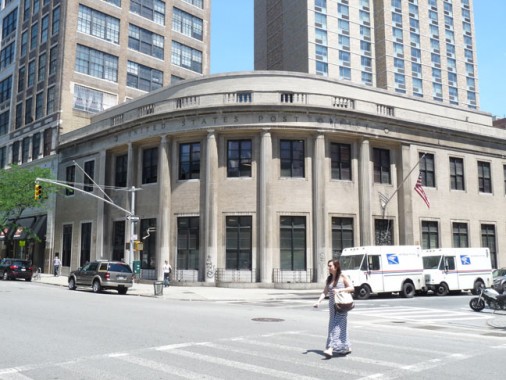
11th Street is interrupted between Broadway and 4th Avenue. Across from the Grace Church Neighborhood House is the curved facade of the Peter Cooper station US Post Office, constructed in 1937. On television’s Seinfeld, this was where the scheming postman Newman worked.
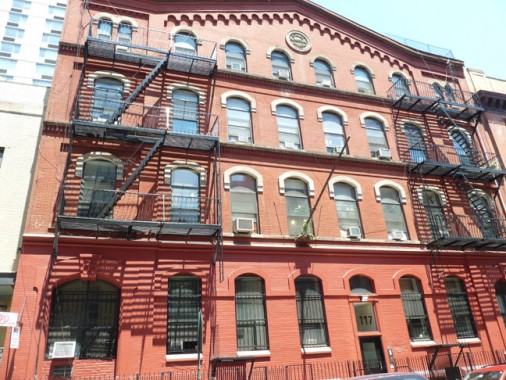
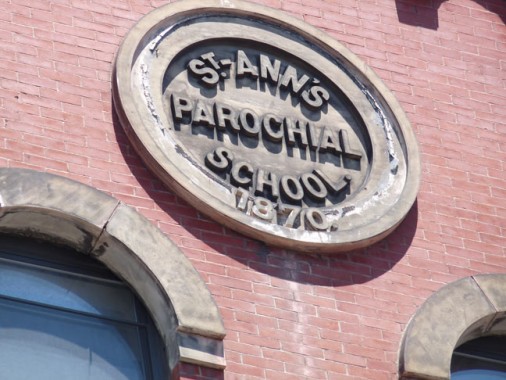
One of two reminders of the now-defunct At. Ann’s Roman Catholic parish, founded in 1853, can be seen here on East 11th between 4th and 3rd. St. Ann’s School was a no nonsense brick structure built in 1870 to the rear of the main church (see below), an 1847 building that had been acquired that same year.
When Webster Hall, from the first a concert and entertainment venue possessing a liquor license, was built next door in 1886, pastor Thomas Scott Preston and parishioners set up a hue and cry hoping to close it, and some newspaper editorials agreed:
“A place such as this dance hall draws to it and about it characters with whom children should not become familiar, and creates noise and confusion intolerable in the immediate vicinity of a school and church. The proprietor of this establishment deserves no consideration at the hands of the Excise Commissioners, who have full authority, and are under positive obligation to refuse him a license.” NY Sun
However, Webster Hall’s owners got to keep their liquor license. After St. Ann’s parish church closed, the school became the Delehanty Institute; it has now been converted into apartments.
Webster Hall, 125 East 11th Street, has operated continuously as an entertainment venue since its 1886 opening. It is a mix of Queen Anne and Renaissance Revival styles and attained its present size after an 1893 addition. It has endured several fires during its history, in 1902, 1911, 1930, 1938, and 1949. It has hosted labor union rallies, weddings, meetings, lectures, dances, masquerade balls and military functions as well as concerts, attaining a leftwing reputation early in its history, from Emma Goldman to Pete Seeger.
In the 1950s, RCA Records used it as a recording venue. Soundtracks for Hello, Dolly! and Fiddler on the Roof were recorded here and pop legends such as Tony Bennett, Harry Belafonte, Perry Como, Ray Charles and even Elvis Presley used the studio to make records.
Webster Hall became The Ritz concert hall from 1980-1989 before moving to the old Studio 54 space. The Ballinger Brothers opened the current Webster Hall concert space in 1992. In that new incarnation, top acts like Linkin Park, Sonic Youth, The Hives, John Mayer and Modest Mouse have all appeared.
The NYC Webster Hall Landmarks Preservation Commission report provides architectural details that assured that it would take its place among NYC landmarks.
![]()
12th Street
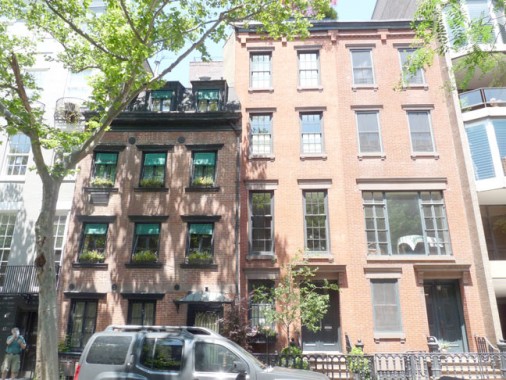
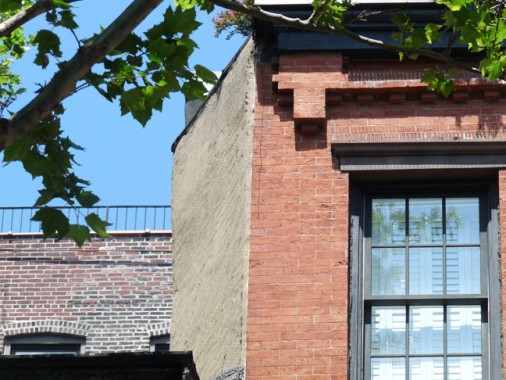
43 West 12th Street is a brick townhouse on a handsome block full of them on both sides. But a closer look reveals one difference — the west side of the building has an oblique angle. When the building was constructed in the early to mid 1800s, Minetta Brook (or Creek) still ran along the surface, and the building ran along the brook. As this map shows, two streams converged just south of 12th Street and ran down to the Hudson River in Washington Square and along Minetta and Downing Streets. The brook was redirected underground decades ago.
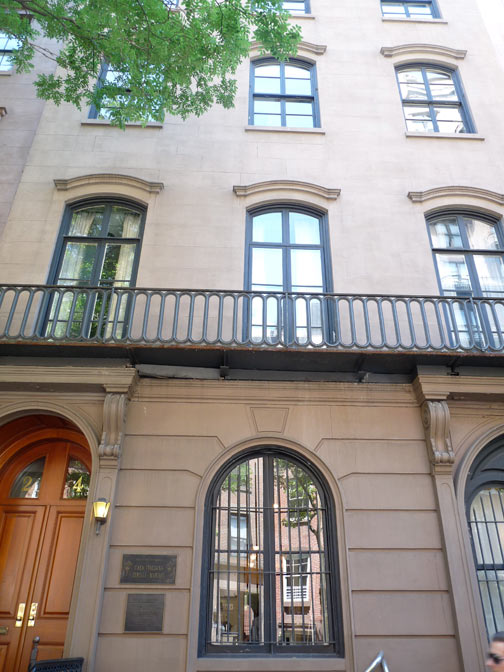
24 West 12th Street was the residence of General Winfield Scott, one of the USA’s more prominent military men in the 19th Century: he participated in the War of 1812, the Black Hawk War, the Mexican War and lived to see the Civil War.
From FNY’s Winfield [a former Queens neighborhood named for him] page:
Born in Virginia in 1786, Winfield Scott proved himself a hero during the lesser-known War of 1812 (1812-1815) and the forgotten Black Hawk War (1832). He peacefully restored tranquility to the Canadian border during Martin Van Buren‘s presidency, and garnered a reputation for being as strong a peacemaker as he was an aggressor. In 1838, Andrew Jackson ordered him to enforce the Treaty of Echota. Scott voiced his disagreement, but ultimately followed the order of his Commander-in-Chief and forcibly relocated the Indians. History refers to this incident as the Cherokee Trail of Tears (1838-1839). The travesty turned out to be the biggest blemish on General Scott’s record.
His return to glory came when, as General-in-Chief of the Army, he successfully commanded our forces during the Mexican War (1846-1848). From that, he brought home many spoils – one being the bell that hangs inside the Bell Tower at West 249th Street and Henry Hudson Parkway in the Riverdale section of the Bronx.
Winfield Scott had always been heavily involved in politics, and in 1852, he set his eyes on winning our country’s biggest political prize. He bested both Daniel Webster and, surprisingly, incumbent President Millard Fillmore to win the Whig Party nomination for President of the United States. In the general election, he was defeated by Democrat Franklin Pierce (who, incidentally, was a distant cousin of former first lady and native Manhattanite Barbara Pierce Bush).
In 1853, General Scott moved to New York and brought with him the Army’s command center. A group of his friends, led by Hamilton Fish, purchased a four story Anglo-Italianate style house at 24 West 12th Street in Greenwich Village, for him for the price of $26,000 (what a deal!). [This site was entered into the National Register of Historic Places in 1973, and now houses the Italian Studies program of New York University.]
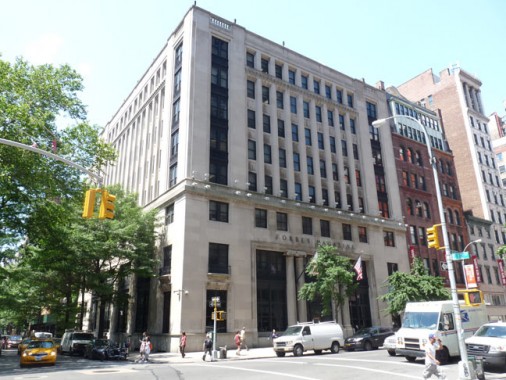
Forbes Magazine headquarters, 5th Avenue and West 12th Street, was built as the HQ of Macmillan Publishing in 1925. Forbes, one of the USA’s premier business news magazines, was founded by Scottish-born financial journalist B.C. Forbes in 1917; B.C. Forbes was editor-in-chief until his death in 1954, assisted by his sons Bruce and Malcolm. Forbes Magazine was later edited by Malcolm’s son, sometime Presidential candidate Malcolm Steven “Steve” Forbes. New York University has owned the building since 2010 and leases space to the Forbes empire.
Malcolm Forbes was a collector of fine art, including jeweled Fabergé eggs, and his collection as well as other art exhibits is located in a public gallery in this building.
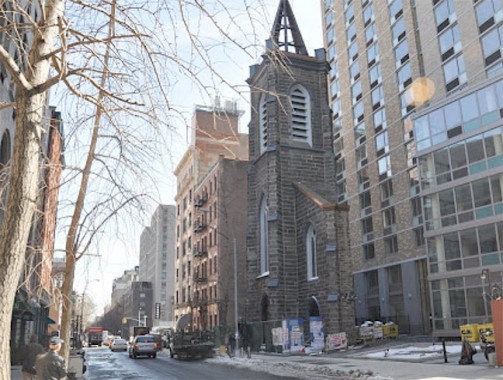
The bell tower of St. Ann’s Church is all that remains of the former church at 120 East 12th between 3rd and 4th Avenues. The church was constructed in 1847, and had been an Anglican church and later a synagogue before it was purchased by St. Ann’s parish in 1870. Retaining the bell tower, architect Napoleon Le Brun demolished most of the existing building and built a new structure.
After a demographic change, the church was re-established as St. Ann’s Armenian Rite Catholic Cathedral, where masses were celebrated in Latin and according to pre-Vatican II rubrics. However, after the Landmarks Preservation Commission failed to landmark the building, it was ultimately sold to NYU, which ripped down the church and built a dormitory, retaining only the original bell tower. “The effect is of a majestic elk, shot and stuffed”, sniffs the AIA Guide to NYC.
Forgotten Fan Peter Walsh (no relation) in Comments:
Each January 21 (or the Sunday closest) a solemn requiem mass was celebrated at St. Ann’s, in Latin, for the repose of the soul of Louis XVI, guillotined on that day in 1793. During the mass Louis’s will was read from the pulpit. At the Paris mass for him on the same day in St. Germain-l’Auxerrois (the parish church of the Louvre when Louis was alive), all the men wear white shirts and black ties. However, at the only mass I attended at St. Ann’s, I seemed to be the only one so attired.
2/24/13

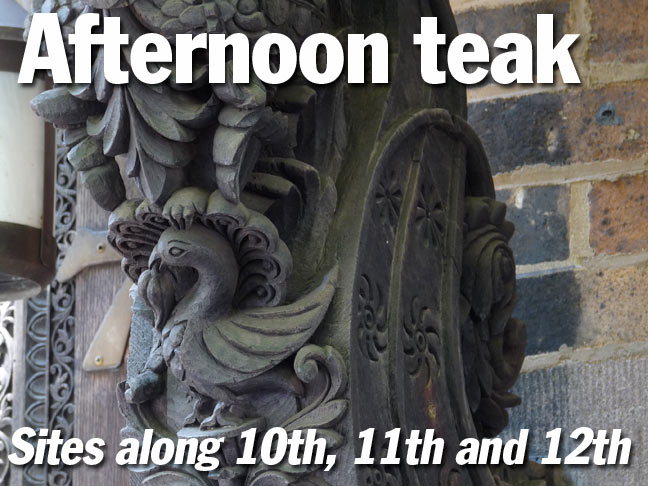
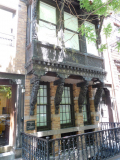
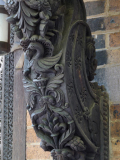
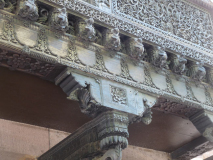

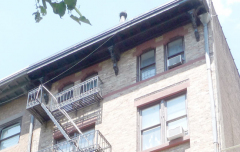
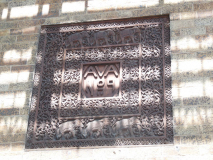
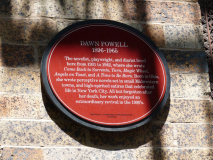
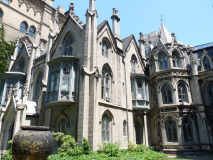
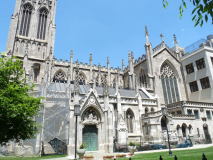
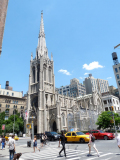
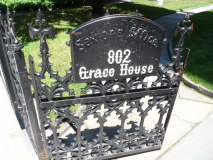
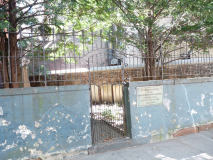
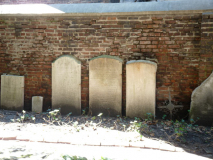

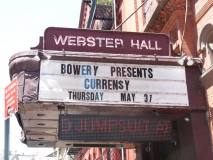
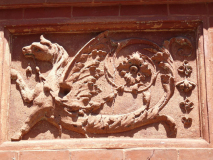
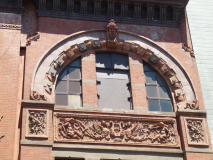
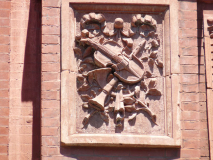
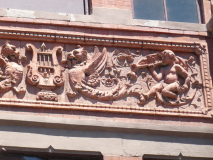
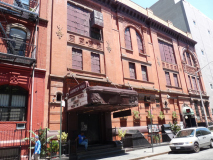
12 comments
Each January 21 (or the Sunday closest) a solemn requiem mass was celebrated at St. Ann’s, in Latin, for the repose of the soul of Louis XVI, guillotined on that day in 1793. During the mass Louis’s will was read from the pulpit. At the Paris mass for him on the same day in St. Germain-l’Auxerrois (the parish church of the Louvre when Louis was alive), all the men wear white shirts and black ties. However, at the only mass I attended at St. Ann’s, I seemed to be the only one so attired.
That’s interesting. I’ll put that in the article.
Where you discuss Shearith Israel cemetery, you have more pictures of Grace Church.
Thanks! Wrong gallery in wordpress, try it now
The Forbes galleries no longer has the Faberge collection. They were sold back to the Russians in 2004. Most of the other artifacts were auctioned in 2010.
Anything south of 14th Street and north of Houston Street is generally considered Greenwich Village, especially west of 4th Avenue-Lafayette Street. East Village is usually considered to be anything east of 4th Avenue-Lafayette Street, again south of 14th and north of Houston. Originally the East Village was considered part of the Lower East Side, until the East Village moniker came into popular usage in the 1960s.
The Paddington Bear that was always in the window of 18 West 11 Street now has a new home at P.S.41 on West 11 Street between 6 & 7 Avenues. He now lives at the school and still dresses for the weather and special occasions.
re: Dustin Hoffman at 16 W 11th: he was not the owner of the building; he was a tenant of the then and current owners
I lived at 7 East 14th Street in 1968, and I shopped frequently at THE CONNOSSEURS CORNER THRIFT SHOPPE which was between 12/13th Streets. Are they still in business? (I knew Dustin Hoffman as well).
Fun survey, but not really Greenwich Village. None of these locations were ever part of the Village of Greenwich, although if you’re a real-estate agent anything south of 14th Street seems to be…
Here is the complete Last Testament of Louis XVI:
http://www.chivalricorders.org/royalty/bourbon/france/louistst.htm
St Ann’s purchased that church in 1870, do you know anything about where they were prior? My great great grandparents were married in St Ann’s Roman Catholic Church in December of 1869, and I think it was on 8th Street then.